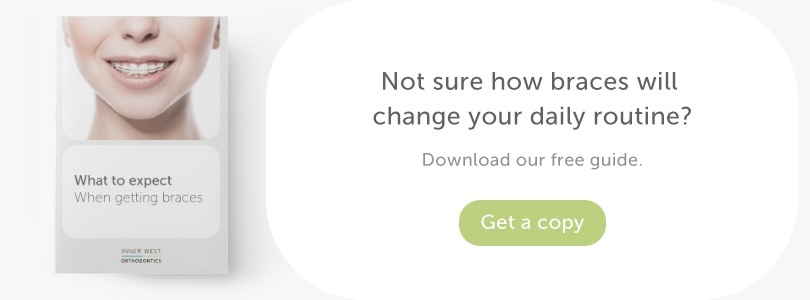How to select the best health insurance for Orthodontics
By Anthony ● February 13, 2017
Technology has come a long way over the last few years, making today’s braces more discreet, comfortable and easy to fit into your lifestyle than ever before. It's no wonder many people are opting to change their smile as adults.
However, braces aren’t something to choose on a whim. They require a great deal of time, care and customisation in order to get the best results — and that all comes at a cost.
Fortunately, many private health providers now acknowledge the enormous benefits braces provide in terms of personal health, wellbeing, confidence and appearance — and incorporate orthodontic care into their policies to reflect that. But even without health insurance, it's still possible to finance your orthodontic treatment with savvy financial planning.
Here's our guide for getting ready for a new smile this year.
What does private health insurance cover?
Many health insurance extras policies cover the partial cost of braces and other orthodontic treatments. This may include services such as general orthodontic examinations, surgical treatment, braces and retainers. However, the exact level of coverage will depend on your individual policy and circumstances.
Before you approach a private health fund, book an orthodontic consultation to see what treatments you're going to need. There's no need to obtain a referral before you make an appointment; orthodontists are open to anyone who is experiencing issues with their bite or who feels unhappy about the state of their smile.
At the consultation, your orthodontist can provide a quote that outlines the specific item numbers of the treatments and procedures you plan to get. If you already have a health fund, this is the information to provide to them in order to find out what can be claimed.
There are two types of dental coverage under Australia's private health system:
- General dental — the first type covers basic visits to the dentist, for cleaning, removal of plaque, x-rays and small fillings. This is included in most basic private health policies.
- Major dental, on the other hand, is the the coverage you will need for orthodontic treatments and braces. This is typically available in premium extras policies.
Finding the best health insurance for orthodontics
If you're not with a health fund yet, consider signing up for private health insurance to help finance your orthodontic work. Before you take the leap, think about how the overall cost of insurance weighs up against the total cost of braces, and whether or not you're likely to get any additional benefit from private health coverage.
A comparison website such as iSelect or Compare the Market makes it easy to weigh up your options. These services don’t always provide a comprehensive overview of all the funds out there though — so it’s a good idea to shop around and do your own research as well. Another option is to look at the Australian Commonwealth Private Health Insurance Ombudsman’s website, where you can find which funds best suit your situation.
Waiting Times
For those who already have basic private health cover, you'll need to upgrade to an extras policy that includes major dental work. If you’re simply transferring from one health fund to another, the waiting period you've already served will roll over (this is typically 12 months). However, if the new level of cover is higher, an additional waiting period may apply.
How much does it cost to get braces without insurance?
Not everyone needs the high level of health cover required in order to be eligible for major dental treatment. In some instances, it may work out more economical to pay for your braces out of pocket. But exactly how much will it set you back?
This all comes down to the treatment time required to correct the misalignment of your teeth. Regardless of the style of braces you choose — whether it be new forms such as Invisalign or lingual braces, or traditional metal ones — their cost will be dependent on how severe your individual case is. This generally ranges anywhere from $4500 up to $8000 (or more if you require particularly intensive treatment).
Paying for braces out of pocket
Payment plans
If private health insurance isn’t the best option for you, some orthodontists may offer to help you set up a negotiable payment plan through the clinic itself. A good orthodontist will work with you to budget for your treatment — after all, orthodontic care should be available to everyone!
Personal loans
There are several forms of personal loans available, including:
- Secured loans (where a personal asset is offered as security in case you cannot make loan repayments)
- Short term loans (small emergency loans) and bank loans or overdrafts.
- And more
Be sure to look carefully at loan terms and interest rates before entering into a contract, to make sure you don’t get stung by the fine print.
Household budgeting
Of course, none of these options replace common-sense budgeting. Getting braces might even be the push you need to put those New Year's financial resolutions in place; think of it as an opportunity!
Over to you
When it comes to pursuing those larger goals, like achieving your ideal smile, small steps will help you in the long run. It might be small habits for tip top dental hygiene, it might be making consistent efforts to budget well.
Taking the leap doesn’t have to be daunting — we’ve compiled a handy guide to demystify the world of adult braces. Find out what you can expect on your journey to a beautiful smile by downloading your free ebook!








